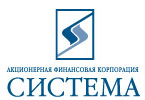|
|
|
 |
Virtual Tours round the Russian Museum The St Michael’s Castle |
     |
The Russian Museum
»
The St Michael’s Castle
The St Michael’s CastleSt Michael’s Castle is a unique monument of Russian architecture of the late 18th – early 19th centuries, which combines the features of a secular palace and those of a medieval knight’s castle. In the middle of the 18th century Empress Elizabeth Petrovna’s Summer Palace was built at the confluence of the Moika and the Fontanka Rivers by the architect Francesco Bartolomeo Rastrelli. Grand Duke Pavel Petrovich was born there. He decided to build a new official residence on the site of the former Summer Palace. The work on St Michael’s Castle’s design lasted for 12 years. The first sketches were executed by Paul I himself. Later on, the professional architects – Henri François Viollier, Vasily Bazhenov and VincenzoBrenna – were engaged in the building project. However only after the death of Catherine II Paul I got an opportunity to start the construction. During his short 4-year reign, the construction of the residence was in full swing. On 26 February 1797 the foundation stone was laid, and on 8 November 1800, on the day of Archangel Michael, the castle was consecrated. The castle was named in honor of Archangel Michael, the patron saint of the House of the Romanovs. According to the legend supported by Paul himself to approve the building of a new palace in the eyes of society, St Michael appeared to the sentry in the yard of the castle and predicted the construction of a new palace and a church on this very spot. In February 1801 Paul with his family moved from the Winter Palace to St Michael’s Castle. For 40 days the castle was the residence of the Emperor. “Here I was born, here I would like to die,” these words were destined to become prophetic. On 11 March 1801 Emperor Paul I was assassinated in his bedroom having become the victim of a palace coup. After his death St Michael’s Castle accommodated private persons: there were flats for officials. It was home to different establishments as well. In 1822 by the decree of Alexander I the building was presented to the Central College of Engineering. That’s why the castle got its new name – the Engineers Castle. The former imperial residence was being rebuilt for the college during the whole century. In the middle of the 19th century by the order of Alexander II at the place of the former bedroom of Paul I the church of the Holy Apostles St Apostles Peter and Paul was established. It has partly preserved its original design. Many outstanding persons studied at the Engineers Castle, among them were the writers Fyodor Dostoyevsky and Dmitry Grigorovich, the scientist Ivan Sechenov and the composer César Cui. In 1991 the building was awarded to the State Russian Museum. Permanent and temporary exhibitions were opened to the visitors in the restored rooms of the castle. |
The Project “The Russian Museum: the Virtual Branch” |